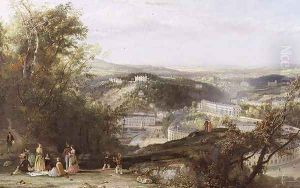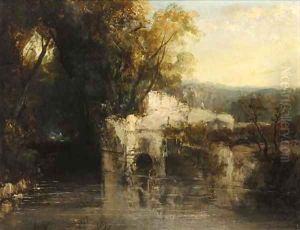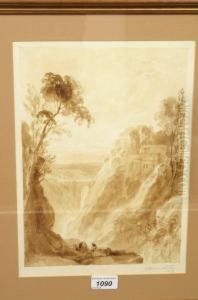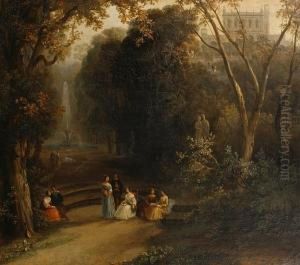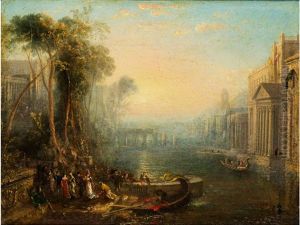John Rawson Walker Paintings
John Rawson Walker was an English artist born in 1796, whose career spanned a significant portion of the 19th century, a period marked by rapid societal changes and the evolution of art movements. Walker's life and work are less documented compared to his more famous contemporaries, making him a somewhat enigmatic figure in the annals of art history. Despite this, he contributed to the British art scene with his unique perspective and skill set, particularly in the realm of watercolor painting and engraving.
Walker's early life is sparsely documented, but it is known that he was active in London, a vibrant center for artists, intellectuals, and innovators during his lifetime. His works often reflected the typical English landscape and rural life, capturing the essence of the countryside with a delicate touch and attention to detail that was characteristic of the period's watercolorists. In addition to landscapes, Walker also delved into architectural subjects, illustrating buildings and ruins with a precise hand, thereby preserving a visual record of historical architecture that in many cases has since been altered or destroyed.
During his career, John Rawson Walker exhibited at prestigious institutions such as the Royal Academy and the British Institution, which were pivotal platforms for artists to showcase their work to the public and patrons alike. His ability to exhibit at these venues indicates a recognition of his talent and the esteem in which he was held by his peers. However, like many artists of his time, much of Walker's work was likely commissioned by private collectors, and as such, a significant portion of his oeuvre might remain in private hands, contributing to the relative obscurity of his legacy.
Walker's artistic output was not limited to watercolors and engravings; he also explored lithography, a printmaking technique that became popular in the 19th century. This versatility demonstrates Walker's adaptability to new art forms and technologies, reflecting the broader trends of his time, where artists were experimenting with and embracing new methods and materials.
John Rawson Walker passed away in 1873, leaving behind a body of work that, while not as widely recognized as that of some of his contemporaries, offers valuable insights into the artistic and cultural landscapes of 19th-century England. His contributions to the fields of watercolor painting and engraving enrich our understanding of the period and underscore the diversity of talent present in the era's art scene.
